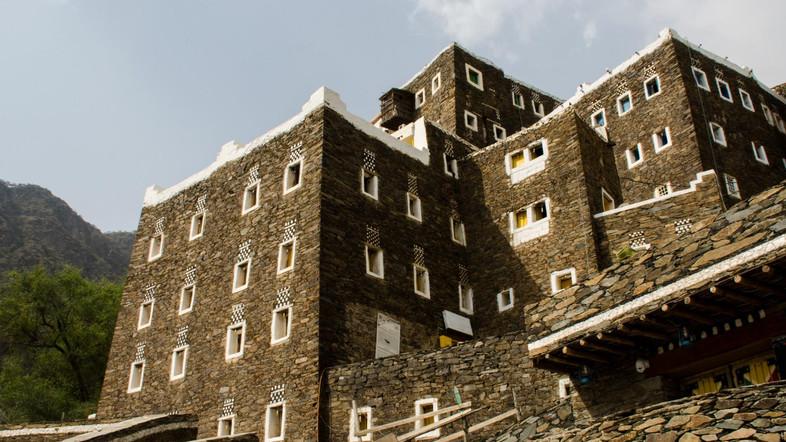History & Heritage
12.7.2018
Rijal Alma: an Arena of Palaces in Saudi Arabia

Picture yourself standing in the middle of an amphitheatre. But the spectators aren’t cheering. In fact they’re not even people. Sixty-odd clay-colored fortresses tower over you, some up to seven stories high.
This dizzying landscape lies in the heart of a recently rehabilitated town named Rijal Almaa. It is west of the Saudi city of Abha, in a mountainous terrain boasting a gentle climate. In the town center is an old arena, surrounded by those beautiful structures.
Careful Restoration
In early December, the Saudi Commission for Tourism & National Heritage announced having collaborated with more than seven governmental bodies—plus a fleet of specialized researchers and technicians—to rehabilitate the old town. Rijal in Arabic literally means “men”—the town’s full name translates to “the Men of Alma”.

A group of Italian architects tour the Rijal Alma fortresses in November 2018. © Arab News
Rijal Alma was acrucial point in times of war and peace over the last three centuries: the local men were famed fighters, who served alongside their neighbouring tribes in many battles waged against Ottoman rule, in the surrounding Asir region.
The color choice is a sober one: white windows peek out of brown brick, clay and wood buildings. Beyond them, stand the looming mountains of the Asir region.
Saudi’s Growing UNESCO Heritage List
This town stands on the tentative UNESCO World Heritage Site list since its proposal in 2015. Considering the recent addition of the oasis of Al-Ahsa to the official listing, this one could also just be around the corner, meaning a new level of recognition by the global tourism community. This is remarkable, knowing that the vast Saudi kingdom is currently gearing up to deliver its first tourist visas to the masses.
See also
Taif, the Saudi Rose GardenA Woman’s Touch
While the story of the men who built the striking structures, and fought for them, is a beautiful one, it is arguable that the fortresses’ inner walls are even prettier.
This is “Al-Qatt Al Asiri”: a decorative art. Ancient legend has it that little girls playing with colored flowers developed a homemade type of paint from the petals, which then evolved into these geometric, bright wall paintings.

Saud art, Al Qatt al Asiri © UNESCO
Built by men and decorated by women, the castle walls are a quintessential chunk of the Saudi kingdom’s history. The decorative art was also inscribed on UNESCO’s List of the Intangible Cultural Heritage of Humanity in late 2017, joining the growing list of hidden gems that Saudi Arabia is beginning to share with the world.
popular

